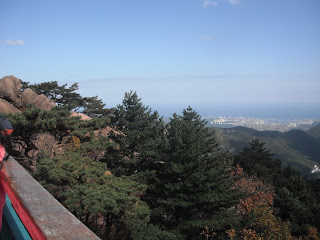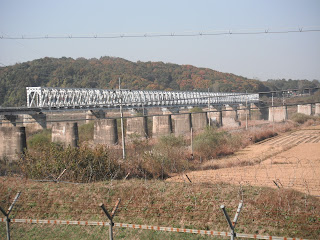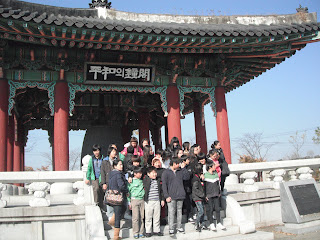On the way to the Goseong Unification Observatory, we took what was reputedly the most beautiful coastal drive in Korea
To get to the Observatory, we had to pass through Tongilanbo Park , part of South Korea
We forgot the soldiers as soon as we got to the Observatory. The Observatory was built in 1983 by an army unit. The views were awesome. That's part of

There were veterans visiting the Observatory that day. One kind veteran came by and told us the way to take to avoid the steps. And that way took us to the northernmost church in South
We had to explore the chapel. It was open, of course. It was small, accommodating perhaps 100 worshippers, beautiful, and very homely. We should have taken pictures of the chapel, but it was the view of the pulpit that took our breath away.
Most parts of the Observatory were not accessible to wheelchairs, but there was a viewing gallery that was. So was the souvenir-snack shop. We took a quick snack for (late) lunch. It was a very interesting snack (what's its name?) made on the spot: a panfried pancake roll with dongfen and fermented spicy radish filling. The pancake skin tasted like it had been made from a mix of rice flour, glutinous rice flour and tapioca flour. Yummy.
Off to our next destination! But before that, a final look at the cute soldiers as we waved our goodbyes.




















































